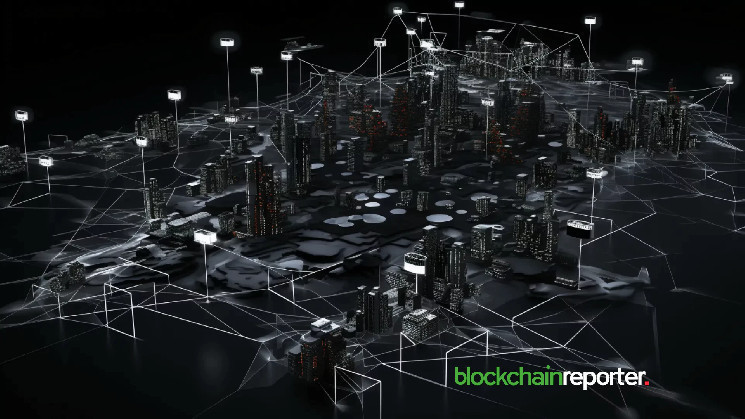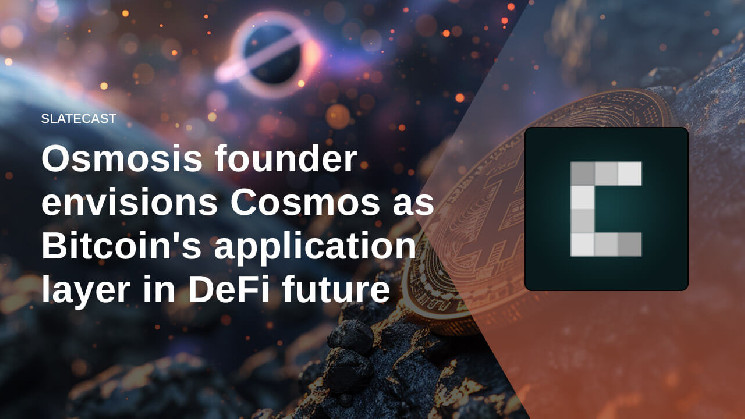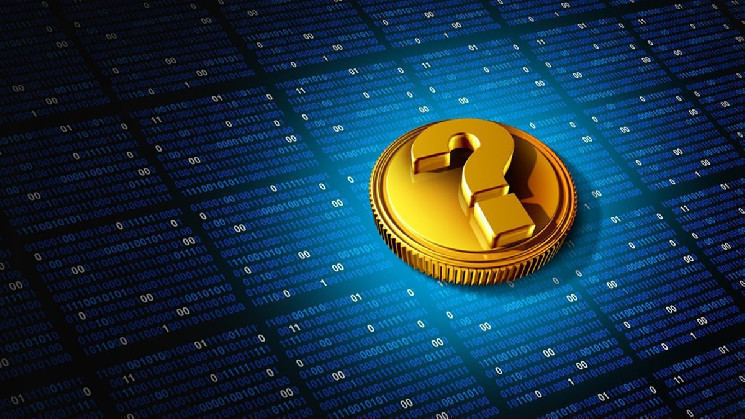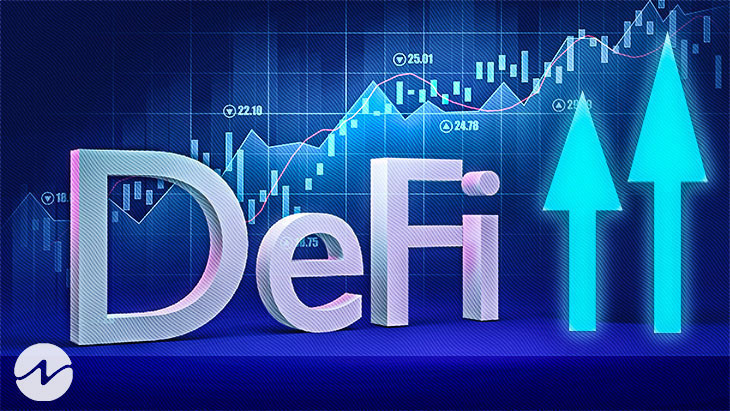Although decentralized finance (defi) continues to evolve, it is being perceived as the domain of a select few, Mehdi Lebbar, the co-founder of the investment platform Exponential, says. However, he argues that defi protocols can alter this perception by emphasizing user education. Lebbar contends that regular educational newsletters, explainer videos, and social media posts can play a pivotal role in achieving this goal.
A Shift From Trusted to Trust-Minimized Models
In responses provided to Bitcoin.com News, Lebbar suggests that defi protocols should prioritize education as diligently as they focus on building products. By doing so, they can effectively bridge the knowledge gap. Additionally, Lebbar highlights a significant shift within the defi ecosystem: a move away from reliance on trusted intermediaries toward trust-minimized models.
Lebbar asserts that trustless or trust-minimized approaches, such as Optimistic and zero-knowledge (ZK) proofs, enhance security and reduce dependence on third-party validators.
Regarding the perceived threat of impermanent loss (IL) on the growth of decentralized exchanges, Lebbar stated that the importance of IL is overstated but acknowledged that it “has impacted participation in liquidity pools.” To mitigate this risk, the Exponential co-founder advised investors to “choose high-yield pools composed of correlated assets and avoid concentrated liquidity pools.”
Meanwhile, Lebbar shared his perspective on crypto degens’ behaviour post the bear market. He also identified some popular yield opportunities and jobs among defi enthusiasts in the current bull market. Below are Lebbar’s answers to all the questions sent.
Bitcoin.com News (BCN): From your perspective, have the scars of the last bear market discouraged crypto degens from pursuing the highest defi yields, or has there been a change in investor behavior or approach toward defi?
Mehdi Lebbar (ML): The last bear market events definitely instilled a more cautious mindset among DeFi investors. At Exponential, we built the most comprehensive risk framework to assess risk on DeFi yield opportunities and assessed more than 500 pools. Based on our research, 94% of the total value-locked (TVL) is currently placed in low-risk pools that generate single-digit yields. This is a testament to a maturing market.
BCN: According to your latest State of Defi 2024 report, the total value locked (TVL) in yield-generating opportunities has surged from $26.5 billion in Q3 of 2023 to $59.7 billion in the first quarter of 2024. From what you have observed which yield opportunities or jobs are gaining popularity among defi enthusiasts in this current bull market?
ML: In the current bull market, staking, bridging, and lending are the frontrunners in popularity among DeFi liquidity providers. Staking has gained a lot of traction over the past year (+251% in Total Value Locked), as the Proof of Stake consensus mechanism is now battle-tested. Bridging, which was deemed the riskiest job in DeFi, has gained traction (+51% in TVL) after canonical bridges like Across built better infrastructure. Secured (overcollateralized) lending is also getting a lot of demand from traders who seek leverage to bet on the bull market. This creates a steady stream of interest paid to lenders as the demand for leverage typically increases during the bull market.
BCN: It would seem that investing in defi has, for the most part, been complex and not for everyone. What do you think needs to be done to improve accessibility and allow more people to participate directly?
ML: DeFi’s growth has been organic, but its complexity remains a barrier to entry. The sheer number of projects and the jargon used can be overwhelming for newcomers. To bridge the knowledge gap, projects need to explain DeFi concepts in an accessible way whether it’s through a dedicated ‘Learn’ section on the website, an educational newsletter, explainer videos, or social media posts. Educating new users should be as important as building products.
BCN: What is impermanent loss, and how can investors protect themselves against it? In your opinion, has the constant fear-mongering about impermanent loss impacted the growth of decentralized exchanges?
ML: Impermanent loss refers to the loss of opportunity that liquidity providers face in decentralized exchanges when the price of their deposited assets diverges by the time they exit the position. In my opinion, the importance of impermanent loss is overstated. For example, in an ETH-USD pool on Uniswap v2, if ETH increases by 50%, the impermanent loss would be about 2%> Meanwhile, liquidity providers typically earn double-digit yields on these market-making pools. The fear of impermanent loss, often amplified by misconceptions, has impacted participation in liquidity pools. To mitigate this risk, investors can choose high-yield pools composed of correlated assets, and avoid concentrated liquidity pools.
BCN: Defi is still perceived as the Wild West by regulators and the media due to persistent reports of hacks, rug pulls, and other issues. In fact, according to a Chainalysis report, hackers stole digital assets worth $1.1 billion from defi protocols in 2023 alone. Given this context, how would you respond to individuals who maintain that defi remains akin to the Wild West? Additionally, what advice would you offer to investors seeking to mitigate the risk of capital loss?
ML: DeFi is the Wild West. It is the frontier of finance. It is where investors find clear market inefficiencies. It is where the money is being made now. Obviously, there is no reason to jump the gun and get killed. There is plenty of gold around, and it takes a bit of research.
BCN: Your platform Exponential.fi claims to prioritize investor safety. Can you talk about how you assess different on-chain and off-chain risk factors in defi pools?
ML: We prioritize investor safety by meticulously assessing a wide array of risk factors across four key categories: blockchain, protocol, asset, and pool. We analyze variables such as total value locked (TVL), the governance structure of the protocol (whether it is controlled by a decentralized governance mechanism or a multisig setup), and the robustness of the blockchain’s validator network, among other things.
We also evaluate the quality of the collateral backing different assets and delve into the economic fundamentals of the tokens involved. This comprehensive risk assessment framework enables us to provide a well-rounded risk profile for each DeFi pool, helping our investors make informed decisions based on thorough due diligence.
BCN: Bridges have traditionally been one of the weakest parts of the defi ecosystem. In your view, have they evolved to become trustless or trust-minimized?
ML: Cross-chain bridges have evolved from relying heavily on trusted intermediaries, who verify asset transfers between chains, to more secure, trustless, or trust-minimized models. Trusted bridges, like the Ronin Bridge, which suffered a significant hack, depend on intermediaries who can be compromised. In contrast, newer technologies like Optimistic and zero-knowledge (ZK) proofs enhance security.
Optimistic bridges work by assuming transactions are valid unless proven fraudulent during a challenging period, requiring just one honest monitor to flag issues. ZK bridges, offering the highest security level, use cryptographic proofs to verify transactions without additional information disclosure. This shift to trust-minimized solutions represents a significant advancement in bridge technology, reducing reliance on third-party validators and increasing overall security.
What are your thoughts on this interview? Share your thoughts in the comments section below.
Sourced from cryptonews.net.










